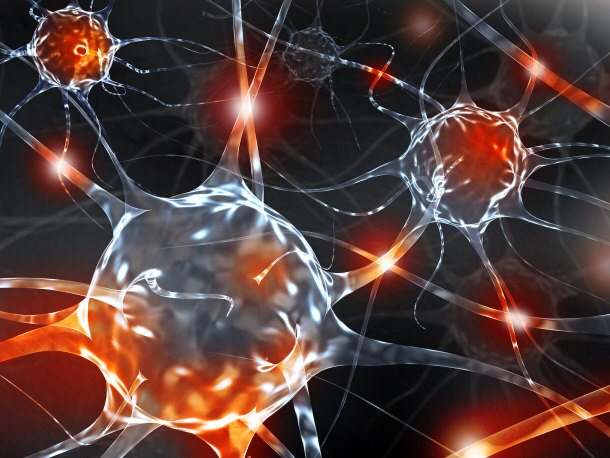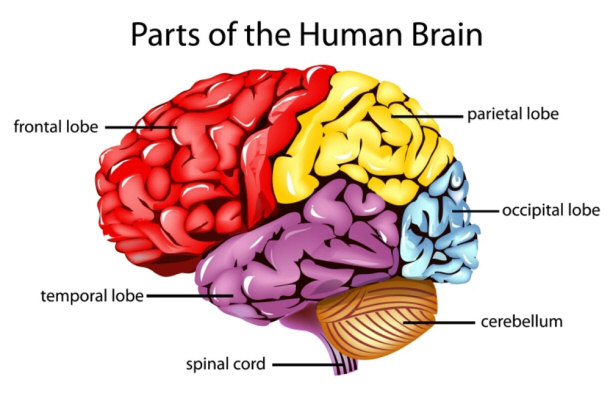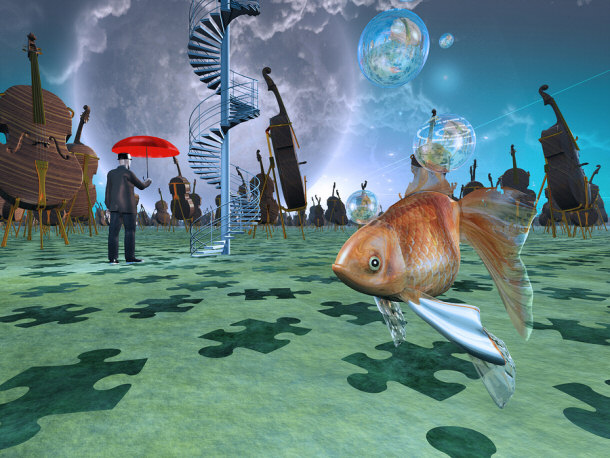What is Alice in Wonderland Syndrome and How Can You Treat the Symptoms
Introduction
Alice in Wonderland syndrome is a condition linked with interruptions of the
nervous system throughout the body. This neurological disorder causes
distortions in perception. It can affect children and adults, but most people
are likely to experience it later in life. Children who suffer the symptoms may
grow out of them by the time they reach the teenage age. Although this condition
is not life threatening, it can cause a lot of discomfort and terrifying
experiences since it induces symptoms of loss of senses, and distorted
perception of images as well as objects. A person with Alice in Wonderland syndrome sees objects
in incorrect sizes and has tactile, auditory and visual hallucinations.

How does Alice in Wonderland Syndrome Occur?
Alice in Wonderland syndrome is caused by factors that affect the way in which
the neurological mechanism in the body is initiated. Interruptions in electrical
waves in the body can trigger distortions in perception. The signals that
conduct communication between the brain to the eyes is altered. This ultimately causes a
psychological
change resulting in the flow of blood to the brain. The warping of signal
communication from brain to eyes can be caused by things like intoxication as a
result of hallucinogens, attacks by migraine headaches, development of brain
tumors, and a possible infection from
Epstein-Barr virus.
 In a migraine attack, a patient may experience an aura, hemi-cranial headache
and visual derangement, which can lead to Alice in Wonderland syndrome. A
seizure in the temporal lobes may cause temporal lobe epilepsy that can also lead to
Alice in Wonderland syndrome. Temporal lobes are regions of the brain that make
up the cerebral cortex. These temporal lobes are involved in the initiation of sensory input,
production of language and speech, organizing auditory and visual perception,
and memory formation. During the initial stage of Epstein-Barr virus, a patient
may experience symptoms like hallucinations when the condition affects the brain
and nervous system. In a migraine attack, a patient may experience an aura, hemi-cranial headache
and visual derangement, which can lead to Alice in Wonderland syndrome. A
seizure in the temporal lobes may cause temporal lobe epilepsy that can also lead to
Alice in Wonderland syndrome. Temporal lobes are regions of the brain that make
up the cerebral cortex. These temporal lobes are involved in the initiation of sensory input,
production of language and speech, organizing auditory and visual perception,
and memory formation. During the initial stage of Epstein-Barr virus, a patient
may experience symptoms like hallucinations when the condition affects the brain
and nervous system.

Psychoactive drugs are medications used in the treatment of psychological
problems such as insomnia, anxiety, and depression and work by acting upon the
body’s nervous system. These drugs alter the functions of the brain resulting in
brief changes in cognition, mood, perception, behavior and the consciousness of
a person. Such substances are believed to cause changes in brain signals which
may result in Alice in Wonderland syndrome.
How Can You Detect that a Person has Alice in Wonderland Syndrome?
 The most common symptom of Alice in Wonderland syndrome is the change in image
perception. A person with this condition sees images of objects incorrectly in
both shape and size. Body parts like heads and hands appear to be strangely
sized and shaped.. A patient may see his or her body disproportionate, where
parts of the body appear outgrown rather than appearing in their normal size.
Objects are also perceived incorrectly in size. The most common symptom of Alice in Wonderland syndrome is the change in image
perception. A person with this condition sees images of objects incorrectly in
both shape and size. Body parts like heads and hands appear to be strangely
sized and shaped.. A patient may see his or her body disproportionate, where
parts of the body appear outgrown rather than appearing in their normal size.
Objects are also perceived incorrectly in size.
Another symptom is migraine attacks, where the patient has a persistent
headache. From this condition, the sense of time is also altered as one may
experience slow or swift passing of time. Hallucinations are also experienced
with patients suffering from Alice in Wonderland syndrome. Visual hallucinations
cause a person to see things, which are not there in the real sense, or things,
which are there but are seen incorrectly.

Auditory hallucination also referred to as paracusia can occur in a person
with Alice in Wonderland syndrome, where a patient hears sounds without an
external stimulus. Moreover, tactile hallucinations can occur where by the
patient feels a sense of touch on the skin when there is nothing to stimulate
the touch. A person may feel a sense of touch when he or she sees another person
being touched. When a patient has distorted touch perception, there is an
illusion of tactile sensory input, which causes a stimulation of pressure on the
skin.
How is Alice in Wonderland Syndrome Treated?
There is no specific effective treatment for Alice in Wonderland syndrome but
there are therapies which can help manage the underlying cause of the condition.
Many people who suffer from the condition in their early age (childhood) are
able to grow out of the disorder by their adolescent age. Because patients
suffer from migraine headaches, treatment plans for migraines are developed
which may include a medication regiment.
 Use
of medications like anticonvulsants, beta blockers, calcium channel blockers,
and anti depressants are recommended. When hallucinations and distortions in
perception occur, taking a nap can help in managing their
symptoms. Although such disruptions in perception may not be dangerous, they can
cause terrifying experiences and an overwhelming sense of panic. Migraine headache
can also be managed through dietary changes. Furthermore there have been
studies hinting at the medicinal uses of hallucinogenic mushrooms for migraines.
Some patients testify that by taking a small amount of magic mushrooms every six
months can help keep away migraines and allow patients to sleep better and more
soundly. Usual doses range from 2 to 3 grams semiannually. Use
of medications like anticonvulsants, beta blockers, calcium channel blockers,
and anti depressants are recommended. When hallucinations and distortions in
perception occur, taking a nap can help in managing their
symptoms. Although such disruptions in perception may not be dangerous, they can
cause terrifying experiences and an overwhelming sense of panic. Migraine headache
can also be managed through dietary changes. Furthermore there have been
studies hinting at the medicinal uses of hallucinogenic mushrooms for migraines.
Some patients testify that by taking a small amount of magic mushrooms every six
months can help keep away migraines and allow patients to sleep better and more
soundly. Usual doses range from 2 to 3 grams semiannually.
Patients are advised to get involved in support groups where they discuss the
experiences they have had and how best they can cope with
it. If the Alice in Wonderland syndrome is caused by temporal lobe epilepsy,
there are different medications that can be used such as Keppra, Zonegran,
Lamictal, and Topamax. These medications should be administered only under the close
supervision of a doctor.
Conclusion
In summary, Alice in Wonderland syndrome can be managed by treating the causal
factors and taking sufficient rest when the hallucinations occur. A patient
should share their experiences in support groups in order to learn how to best
cope with the condition.
Diseases & Conditions
Top Lists:
Top 10 Most Common Genetic Disorders
Top 15 Most Disturbing Skin Conditions
10 Unusual Phobias
Informational:
Diverticular Disease and Diverticulitis
What is Turner Syndrome and Why Does it Affect Only Females?
Alice in Wonderland Syndrome and How to Treat the Symptoms
Herniated Disc: Symptoms and Treatments
Pinch Nerve: The Cause of Remote Pain
Dealing With a Child Who Has a Fever
How Unhealthy Diet Could Trigger Inflammatory Arthritis
Phobias: Understanding How They Develop and Treatments
Depression Facts, Symptoms & Treatment
Earaches - Causes and Treatments
Symptoms of Borderline Personality Disorder and How to Deal with It
Seasonal Affective Disorder: Does Light Therapy Help?
What Really Causes Dandruff and How Can You Treat the Symptoms
Treating Plantar Fasciitis or Heel and Arch Pain
Symptoms and Treatments of Aplastic Anemia
Using Sclerotherapy to Get Rid of Varicose Veins
Are the Side Effects of HGH Supplements Worth It?
ADD/ADHD Symptoms and Treatment
What are the Options for Hair Loss Treatments
Options for Frontal Hair Loss Treatment |